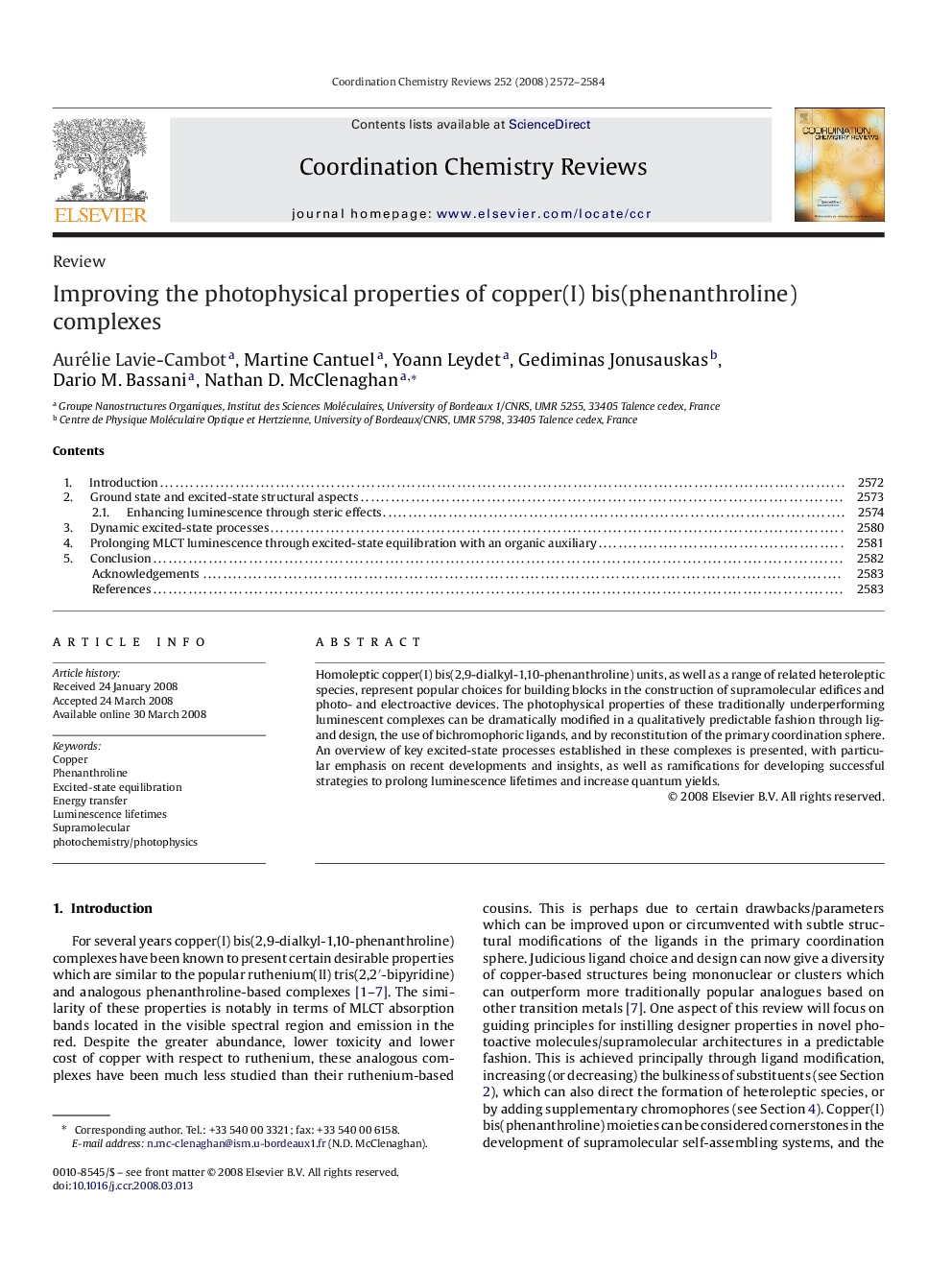| Article ID | Journal | Published Year | Pages | File Type |
|---|---|---|---|---|
| 1300408 | Coordination Chemistry Reviews | 2008 | 13 Pages |
Homoleptic copper(I) bis(2,9-dialkyl-1,10-phenanthroline) units, as well as a range of related heteroleptic species, represent popular choices for building blocks in the construction of supramolecular edifices and photo- and electroactive devices. The photophysical properties of these traditionally underperforming luminescent complexes can be dramatically modified in a qualitatively predictable fashion through ligand design, the use of bichromophoric ligands, and by reconstitution of the primary coordination sphere. An overview of key excited-state processes established in these complexes is presented, with particular emphasis on recent developments and insights, as well as ramifications for developing successful strategies to prolong luminescence lifetimes and increase quantum yields.
